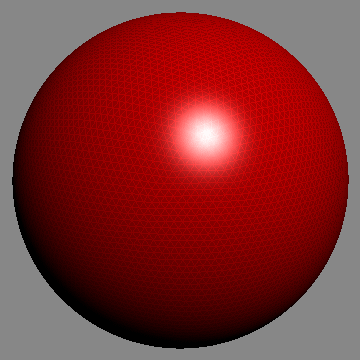|
Hachure
Hachures () are an older mode of representing relief. They show orientation of slope, and by their thickness and overall density they provide a general sense of steepness. Being non-numeric, they are less useful to a scientific survey than contours, but can successfully communicate quite specific shapes of terrain. They are a form of shading, although different from the one used in shaded maps. Hachure representation of relief was standardized by the Austrian topographer Johann Georg Lehmann in 1799. Hachures may be combined with other ways of representing relief, such as shades, the result being a shaded hachure map; an example of such a map is the ''Dufour Map'' of Switzerland. Emil von Sydow designed maps with coloured hachures: green for lowlands and brown for highlands. Overview Hachures are strokes (short line segments or curves) drawn in the direction of the steepest slope (the aspect direction). Steeper slopes are represented by thicker, shorter strokes, while gentl ... [...More Info...] [...Related Items...] OR: [Wikipedia] [Google] [Baidu] |
Cartographic Relief Depiction
Terrain cartography or relief mapping is the depiction of the shape of the surface of the Earth on a map, using one or more of several techniques that have been developed. Terrain or relief is an essential aspect of physical geography, and as such its portrayal presents a central problem in cartographic design, and more recently geographic information systems and geovisualization. Hill profiles The most ancient form of relief depiction in cartography, hill profiles are simply illustrations of mountains and hills in profile, placed as appropriate on generally small-scale (broad area of coverage) maps. They are seldom used today except as part of an "antique" styling. Physiographic illustration In 1921, A.K. Lobeck published ''A Physiographic Diagram of the United States'', using an advanced version of the hill profile technique to illustrate the distribution of landforms on a small-scale map.Lobeck, A.K. (1921''A Physiographic Diagram of the United States'' A.J. Nystrom & Co., ... [...More Info...] [...Related Items...] OR: [Wikipedia] [Google] [Baidu] |
First Manassas Map2
First or 1st is the ordinal form of the number one (#1). First or 1st may also refer to: *World record, specifically the first instance of a particular achievement Arts and media Music * 1$T, American rapper, singer-songwriter, DJ, and record producer Albums * ''1st'' (album), a 1983 album by Streets * ''1st'' (Rasmus EP), a 1995 EP by The Rasmus, frequently identified as a single * '' 1ST'', a 2021 album by SixTones * ''First'' (Baroness EP), an EP by Baroness * ''First'' (Ferlyn G EP), an EP by Ferlyn G * ''First'' (David Gates album), an album by David Gates * ''First'' (O'Bryan album), an album by O'Bryan * ''First'' (Raymond Lam album), an album by Raymond Lam * ''First'', an album by Denise Ho Songs * "First" (Cold War Kids song), a song by Cold War Kids * "First" (Lindsay Lohan song), a song by Lindsay Lohan * "First", a song by Everglow from ''Last Melody'' * "First", a song by Lauren Daigle * "First", a song by Niki & Gabi * "First", a song by Jonas Brot ... [...More Info...] [...Related Items...] OR: [Wikipedia] [Google] [Baidu] |
Shading
Shading refers to the depiction of depth perception in 3D models (within the field of 3D computer graphics) or illustrations (in visual art) by varying the level of darkness. Shading tries to approximate local behavior of light on the object's surface and is not to be confused with techniques of adding shadows, such as shadow mapping or shadow volumes, which fall under global behavior of light. In drawing Shading is used traditionally in drawing for depicting a range of darkness by applying media more densely or with a darker shade for darker areas, and less densely or with a lighter shade for lighter areas. Light patterns, such as objects having light and shaded areas, help when creating the illusion of depth on paper. There are various techniques of shading, including cross hatching, where perpendicular lines of varying closeness are drawn in a grid pattern to shade an area. The closer the lines are together, the darker the area appears. Likewise, the farther apart the lin ... [...More Info...] [...Related Items...] OR: [Wikipedia] [Google] [Baidu] |
Dufour Map
{{disambiguation ...
Dufour or ''variant'', may refer to: * Dufour (surname) Places *Dufourspitze or Dufour's peak, in the Swiss Alps *Julia Dufour, a village and municipality in Santa Cruz Province, Argentina Other uses * 1961 Dufour, main-belt asteroid * Dufour Auditorium, a concert hall in Saguenay, Quebec, Canada *Dufour Yachts, French sailboat manufacturer *Dufour's gland, an abdominal gland of certain insects *Dufour effect, the energy flux due to a mass concentration gradient See also * Dufour-Lapointe, a surname * Four (other) * Joseph Dufour et Cie, French wallpaper and fabrics manufacturer * DE 4, Delaware Route 4 * (23466) 1990 DU4, asteroid *DU-4, an acupuncture point Acupuncture is a form of alternative medicine and a component of traditional Chinese medicine (TCM) in which thin needles are inserted into the body. Acupuncture is a pseudoscience; the theories and practices of TCM are not based on scientifi ... [...More Info...] [...Related Items...] OR: [Wikipedia] [Google] [Baidu] |
Switzerland
). Swiss law does not designate a ''capital'' as such, but the federal parliament and government are installed in Bern, while other federal institutions, such as the federal courts, are in other cities (Bellinzona, Lausanne, Luzern, Neuchâtel, St. Gallen a.o.). , coordinates = , largest_city = Zürich , official_languages = , englishmotto = "One for all, all for one" , religion_year = 2020 , religion_ref = , religion = , demonym = , german: Schweizer/Schweizerin, french: Suisse/Suissesse, it, svizzero/svizzera or , rm, Svizzer/Svizra , government_type = Federalism, Federal assembly-independent Directorial system, directorial republic with elements of a direct democracy , leader_title1 = Federal Council (Switzerland), Federal Council , leader_name1 = , leader_title2 = , leader_name2 = Walter Thurnherr , legislature = Fe ... [...More Info...] [...Related Items...] OR: [Wikipedia] [Google] [Baidu] |
Emil Von Sydow
Emil von Sydow (15 July 1812 – 13 October 1873) was a German military officer, geographer and cartographer born in Freiberg, Saxony. Prior to 1843 he was a geography instructor at the military academy in Erfurt, afterwards being appointed as a member of the ''Ober- Militär-Examinationscommission'' in Berlin. In 1849 he began giving instruction in geography to Prince Albert of Prussia (1837–1906), and soon afterwards gave lectures on military geography at the ''Allgemeinen Kriegsschule''. From 1855 to 1860 he performed geographical and cartological duties in Gotha, then returned to Berlin, where in 1867 he was appointed ''Abtheilungschef'' (division chief) to the Prussian General Staff. In 1870 he attained the rank of Colonel, and died three years later in Berlin due to cholera. He is considered to be the founder of methodical school cartography, and distinguished himself by creating his own wall maps for classroom instruction. In 1838 he produced a physical map of Asia in his ... [...More Info...] [...Related Items...] OR: [Wikipedia] [Google] [Baidu] |
Conquest Mexico 1519 21
Conquest is the act of military subjugation of an enemy by force of arms. Military history provides many examples of conquest: the Roman conquest of Britain, the Mauryan conquest of Afghanistan and of vast areas of the Indian subcontinent, the Spanish conquest of the Aztec Empire and various Muslim conquests, to mention just a few. The Norman conquest of England provides an example: it built on cultural ties, led to the subjugation of the Kingdom of England to Norman control and brought William the Conqueror to the English throne in 1066. Conquest may link in some ways with colonialism. England, for example, experienced phases and areas of Anglo-Saxon, Viking and Franco-Norman colonisation and conquest. Methods of conquest The Ottomans used a method of gradual, non-military conquest in which they established suzerainty over their neighbours and then displaced their ruling dynasties. This concept was first systematized by Halil İnalcık. Conquests of this sort did no ... [...More Info...] [...Related Items...] OR: [Wikipedia] [Google] [Baidu] |
Aspect (geography)
In physical geography and physical geology, aspect (also known as exposure) is the compass direction or azimuth that a terrain surface faces. For example, a slope landform on the eastern edge of the Rockies toward the Great Plains is described as having an ''easterly aspect''. A slope which falls down to a deep valley on its western side and a shallower one on its eastern side has a ''westerly aspect'' or is a ''west-facing slope''. The direction a slope faces can affect the physical and biotic features of the slope, known as a slope effect. The term aspect can also be used to describe a related distinct concept: the horizontal alignment of a coastline. Here, the aspect is the direction which the coastline is facing towards the sea. For example, a coastline with sea to the northeast (as in most of Queensland) has a ''northeasterly aspect''. Aspect is complemented by ''grade'' to characterize the surface gradient. Importance Aspect can have a strong influence on temperatur ... [...More Info...] [...Related Items...] OR: [Wikipedia] [Google] [Baidu] |
Eduard Imhof
Eduard Imhof (25 January 1895 – 27 April 1986) was a professor of cartography at the Swiss Federal Institute of Technology, Zürich, from 1925 to 1965. His fame, which extends far beyond the Institute of Technology, stems from his relief shading work on school maps and atlases. Between 1922 and 1973 Imhof worked on many school maps. He drew and shaded maps of Switzerland as well her various cantons and the Austrian province of Vorarlberg. Biography Eduard Imhof was born in Schiers, a town in eastern Switzerland. His father, also Eduard Imhof, was a geographer who taught at a local college. In 1902 the family moved to Zurich, were Imhof continued his schooling. In 1914 he began studying surveying at the Swiss Federal Institute of Technology, continuing until 1919. Whilst a student his studies where sometimes interrupted by military duty guarding the Swiss border as a lieutenant of artillery. During the Second World War he would return to military service in 1939 and serve occ ... [...More Info...] [...Related Items...] OR: [Wikipedia] [Google] [Baidu] |
Map Types
A map is a symbolic depiction emphasizing relationships between elements of some space, such as objects, regions, or themes. Many maps are static, fixed to paper or some other durable medium, while others are dynamic or interactive. Although most commonly used to depict geography, maps may represent any space, real or fictional, without regard to context or scale, such as in brain mapping, DNA mapping, or computer network topology mapping. The space being mapped may be two dimensional, such as the surface of the earth, three dimensional, such as the interior of the earth, or even more abstract spaces of any dimension, such as arise in modeling phenomena having many independent variables. Although the earliest maps known are of the heavens, geographic maps of territory have a very long tradition and exist from ancient times. The word "map" comes from the , wherein ''mappa'' meant 'napkin' or 'cloth' and ''mundi'' 'the world'. Thus, "map" became a shortened term referring to ... [...More Info...] [...Related Items...] OR: [Wikipedia] [Google] [Baidu] |



Müller_Carl_btv1b8453272j_(cropped).jpg)
